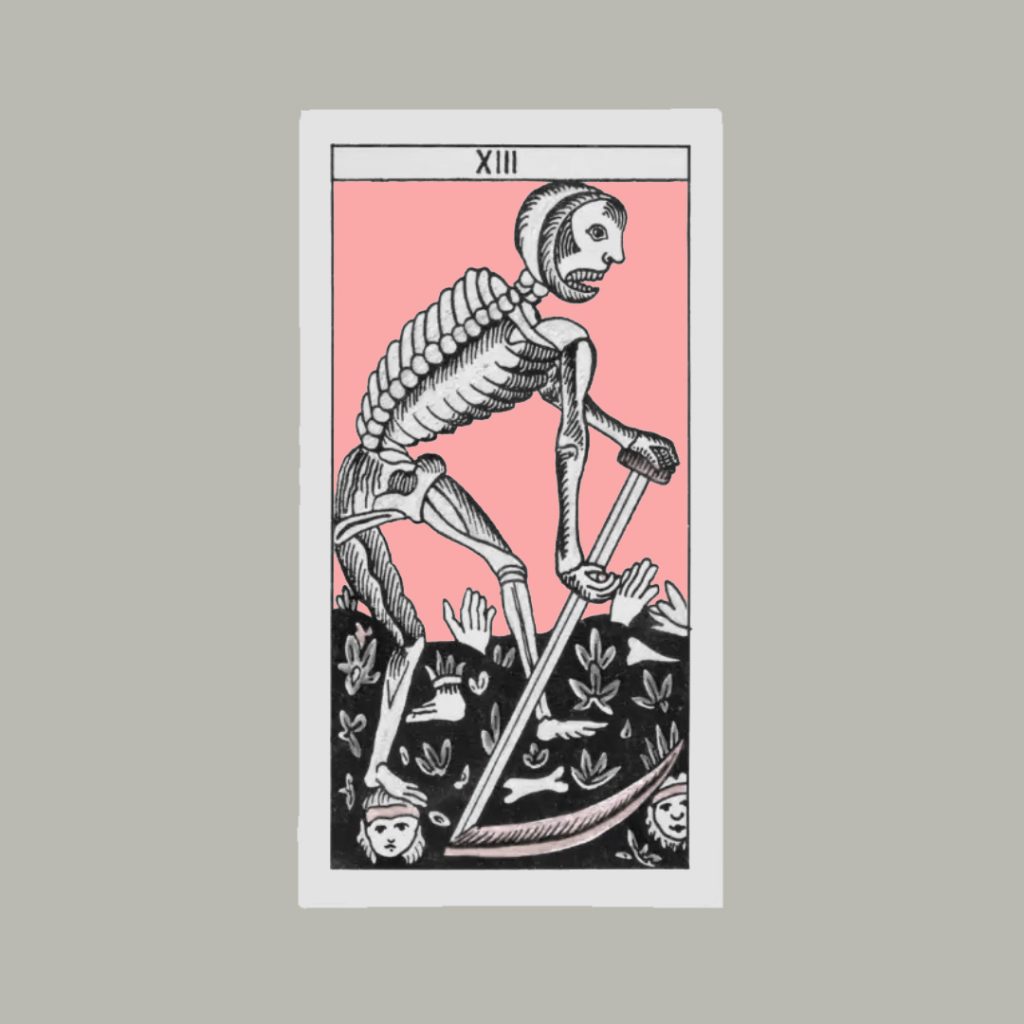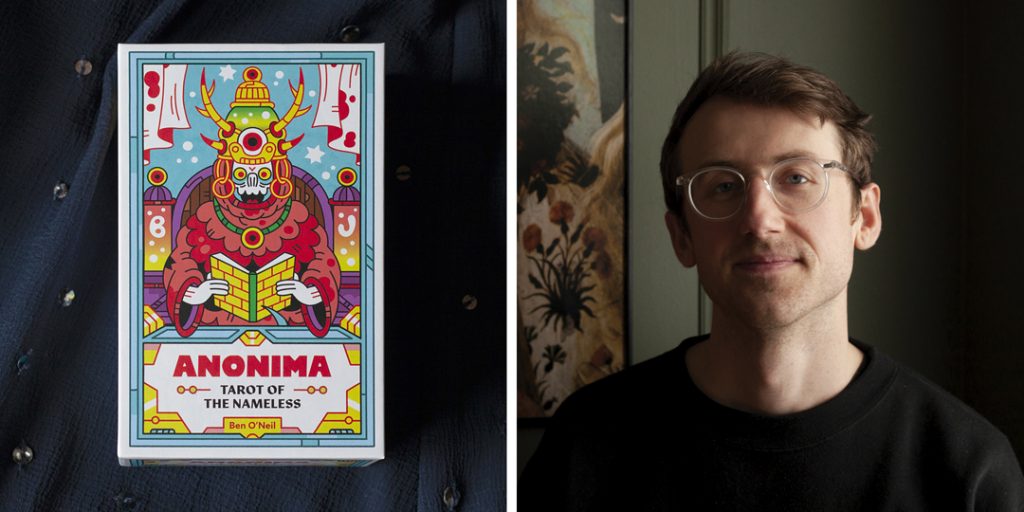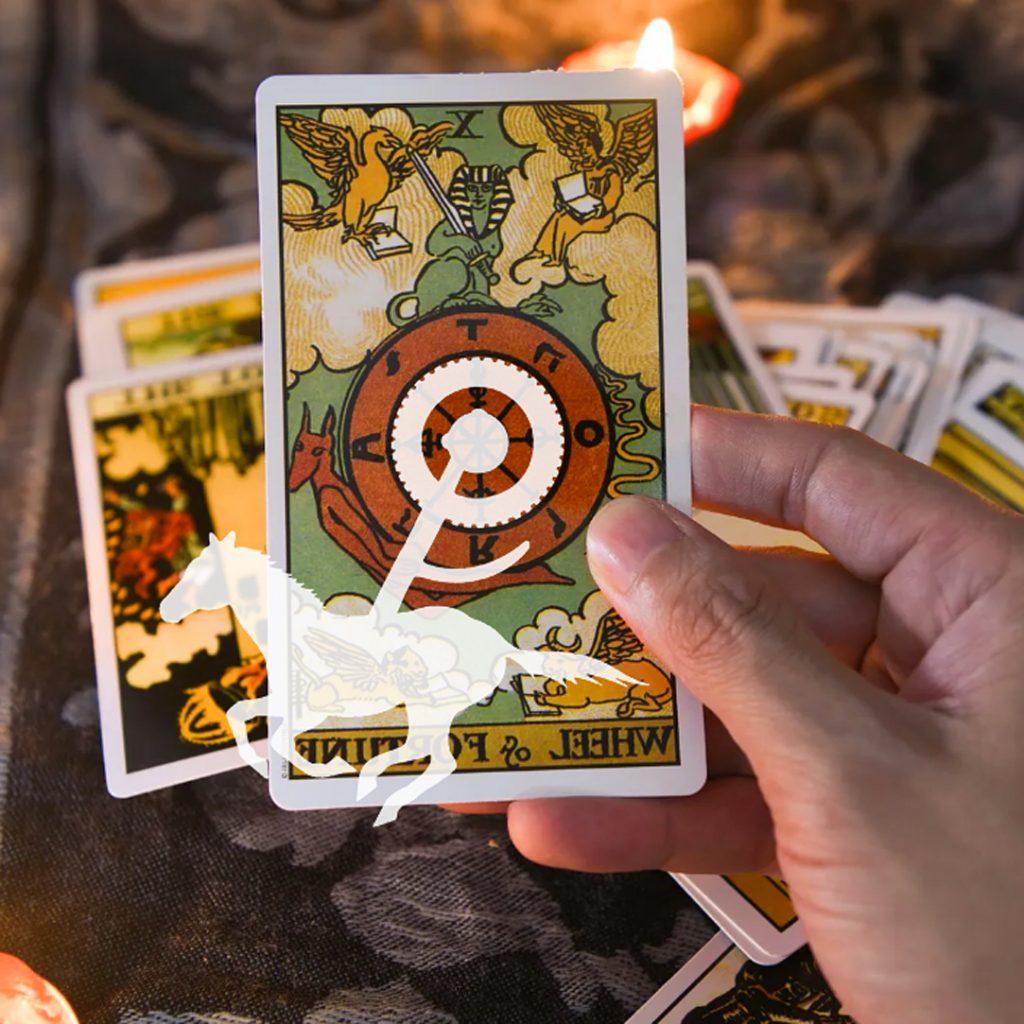
In this very special edition of CAROUSEL, poets and authors offer us images and ideas and impressions and motifs to fall into. They encourage us to simmer in our own ambiguity, to see past the most obvious answer. Throughout CAROUSEL 48: Writing the Tarot, our 5th entirely paywall-free online issue, we look to the art of cartomancy for inspiration.
First and foremost, thank you to everyone who submitted work to be considered. We received a steady stream of submissions that surprised, delighted and comforted me. I was overjoyed to see such profound interest in our call, which ultimately made it difficult to carve down the stack to a single issue. I appreciate you for sharing your work with me.
Now, onto the issue!

We begin with a focus on Toronto artist Ben O’Neil, who firstly designed our issue’s colourful, frenetic cover … drafted in the same style as his latest project, the Anonima Deck: a lovely limited-edition 78-card tarot creation that debuted this month. Like other contemporary decks by artists we admire (like Oliver Hibert, Sophy Hollington and Of Stick and Bone, to name a few) O’Neil’s ‘Tarot of the Nameless’ is unique in its own right, but draws well-researched inspiration from some of the most popular historical decks. Be sure to check it out!
Our fiction section is graced by Morgan Dick and Hollay Ghadery, who (like a lot of us) build their stories around flipping cards. For Dick, a tarot reading goes awry to bring out girlish nefariousness; and, for Ghadery, a reading predicts ominous change in the midst of an endearing, perhaps everlasting love. Both stories gesture towards change when we want it least, but we’re still along for the ride.
Our poetry section is brimming with the words of Courtney Bates-Hardy, Michelle Cadiz, Sophie Crocker, Marguerite Doyle, Merie Kirby, Alison Lubar, Kornelia Mlak, Jake Phillips, Belicia Rhea, Emory Rose, Micheal Russell and Salonee Verma. Some poets directly address the symbols of the tarot, ram-headed, chariot wheels forward, while others thinly allude to their meaning, twisting their fingers in the cold air. This poetic sampling offers rabbits, open mouths, broken teeth, ripe fruit and some freaky ass archetypes. As a collection, it strays from a succinct, past-present-future reading; it isn’t interested in good advice, or a simple yes / no card flip. Instead, the poems invite you to marvel, to balance your contradictions on the Magician’s table. In the words of Salonee Verma, Can you imagine that, baby?
I also had the opportunity to interview Damian Rogers and Liz Worth for this issue, two established Canadian literary talents who also pursue twinned careers involving tarot divination. Rogers grapples with bringing her private practice into the public sphere through writing; she positions tarot as an exchange, a point of connection and much like her creative process, tarot rejects a blueprint. Worth, in turn, draws parallels between writing a first draft and learning how to read tarot — both can get uncomfortable, awkward, ugly, and yet, one has to start somewhere; raw talent or intuition can only carry a person so far, and then they simply have to put in the time, do the work.

A special thank you to Mark Laliberte for passing me the reins on this issue and offering endless support, advice and resources to breathe life into it. A huge thank you to Jade Wallace and Jessica Poole for their keen editorial eyes and additional support. Working as part of the CAROUSEL team was one the most nourishing experiences of my undergrad, so guest editing this themed issue served as the perfect capstone. Finally, my most heartfelt gratitude is owed to you, the reader, looking down, sitting improperly and straining your eyes for this issue: thanks for finding magic in a humble deck of cards.

Taylor Brown is the former Poetry Editor for CAROUSEL. She began studying tarot in 2019 and has since read for Guelph Pride events and everyone who asks nicely. She currently lives in Halifax, where ghost stories are plentiful.

